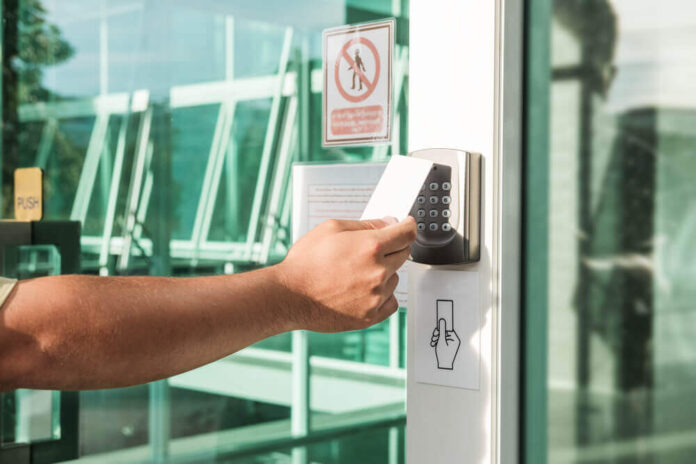Keeping your data, assets, and employees safe is crucial as a business owner. And one way effective way to do this is by implementing an access control system.
This allows you to control and manage access to your buildings, rooms, or other structures within your operations site. It’s a vital component in increasing the level of security you have in your business.
There are various options available when it comes to access control hardware, though they all fall under proprietary and non-proprietary.
Proprietary access control hardware refers to those made with a specific company’s designs. It can only work with that company’s software and systems, limiting your choice of provider.
In contrast, non-proprietary access control hardware isn’t exclusive to a particular company. You get to pair it with other software and systems for more customized security solutions. Thus, if you have open source door access control software, you can easily integrate any non-proprietary hardware you want to design the ideal security system for you and your employees.
Advantages Of Non-Proprietary Access Control Hardware
While sticking to a single provider does have its benefits in the form of exclusive features and easily accessible support, non-proprietary hardware has its own advantages. Here are some of them:
-
Flexible and Scalable
Your organization can experience changes at various stages of its growth and expansion. For this reason, you’ll have to constantly adjust access controls for different users, locations, and devices.
For that, non-proprietary access control hardware allows you to easily add or remove hardware, devices, and software as necessary. This is in stark contrast to proprietary hardware, which greatly limits your choices to those designed by the same provider.
This ease of adjustment saves you from going through a new procurement process whenever your requirements change. Thus, making non-proprietary access control hardware ideal if you see your enterprise growing consistently.
-
Easy To Install And Maintain
You can work with existing systems when using non-proprietary access control hardware. Thanks to that, your team won’t have to acquire new skill sets for proper installation and maintenance. Proprietary hardware may need extra training or specialized knowledge for the same work.
The ease of installation and maintenance saves you time implementing your desired access control system. Furthermore, it can help save money you would rather use for maintenance and repairs.
-
It Is Cost-effective
Non-proprietary access control hardware doesn’t tie you to a specific brand or software system. Therefore, you can deploy it in a system within your budget and don’t need to break the bank to adopt and implement it.
As a result, it helps you save money on system costs while still letting you get the level of support and protection you need.
-
Compatible With Other Systems
If you get proprietary access control hardware, you may need an extensive overhaul of your existing system to accommodate the new components. You don’t need to do the same thing with non-proprietary hardware.
As mentioned before, non-proprietary access control hardware lets you easily integrate with your existing systems and devices. Hence, you can acquire a new security infrastructure setup without significant overhauls.
-
Reliable And Secure
Due to its interoperability, non-proprietary access control software is less likely to experience compatibility issues or malfunctions. This makes it still functional even when other systems and devices undergo software updates or upgrades. As a result, there’s less compromise on security as you experience fewer disruptions to your access controls.
With this combination of advantages, you can see how going non-proprietary provides you with the value, peace of mind, and reliability you need for your access control system.
Examples Of Non-Proprietary Access Control Hardware
Below are some of the popular non-proprietary hardware in the market today.
1. Card readers: They allow you to access a building or area by swiping or inserting a card or key fob.
2. Keypads: These allow access to restricted areas by entering a code usually individually assigned by a system admin. The admin allocates entry access depending on the authority levels of each user.
3. Biometric scanners: These identify and authenticate users using biometric technology. You can choose between fingerprint, retinal, or facial recognition scanners.
4. Door controllers: As the name implies, they control the operation of doors and other entry points. You usually find them in conjunction with access controls like keypads and card readers. A door controller identifies, verifies, and grants entry to a user according to their authority level. You can also program them to allow or deny entry according to the time of day, location of the user, or type of access requested.
5. Access control panels: These work similarly to door controllers. However, door controllers are specific to a single door, entry point, or location. On the other hand, access control panels are a central control system for multiple doors, entry points, or locations. Their hardware components, though, can be similar.
These can be used in various configurations to create a network of security you can control. You just have to work with your security and management department to find the best ways to implement and maintain them.
Create The Protection You Need
Advantages like flexibility and interoperability make non-proprietary access control hardware a better option for many organizations. Feel free to reach out to trusted providers to learn more about the choices available for designing your security system.
















